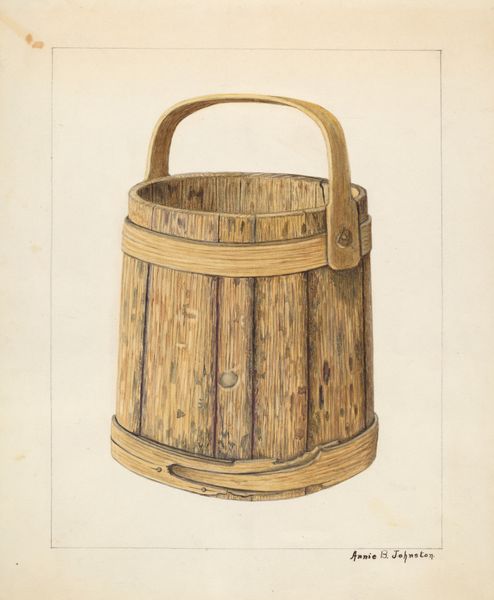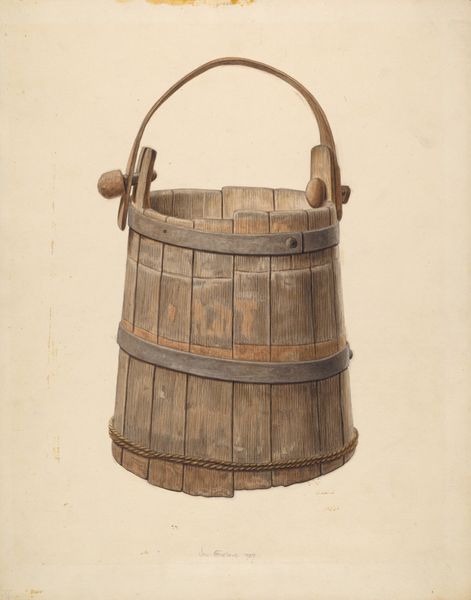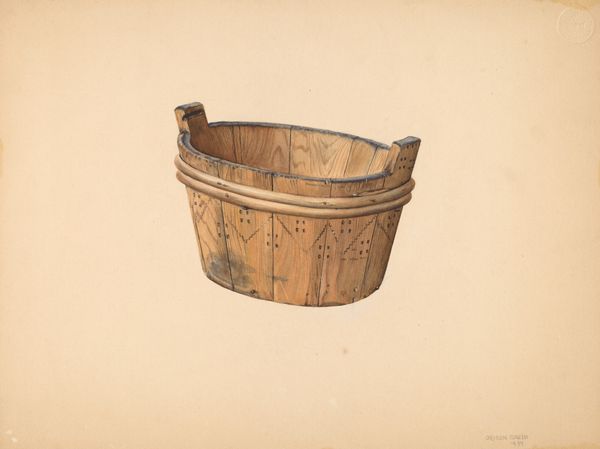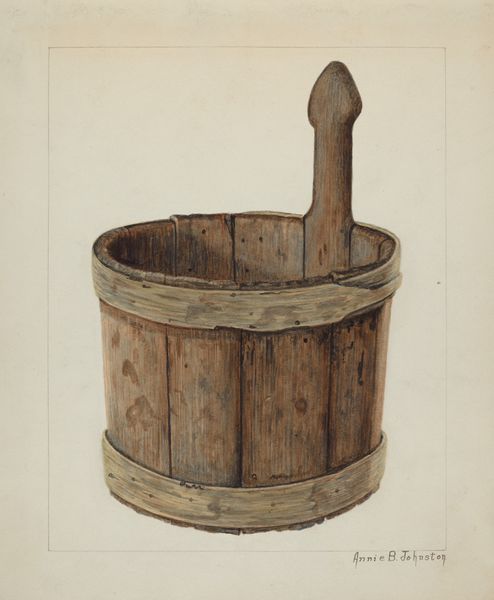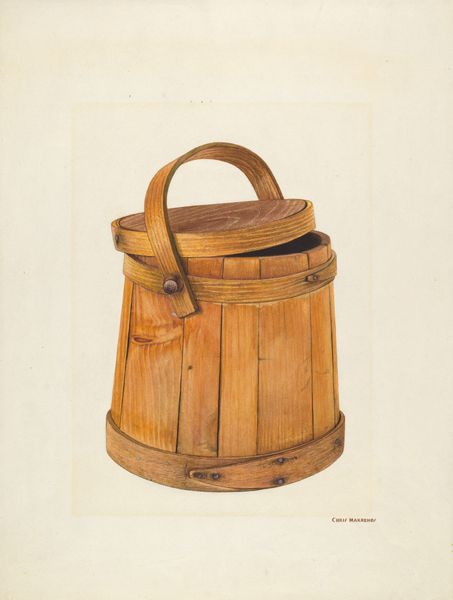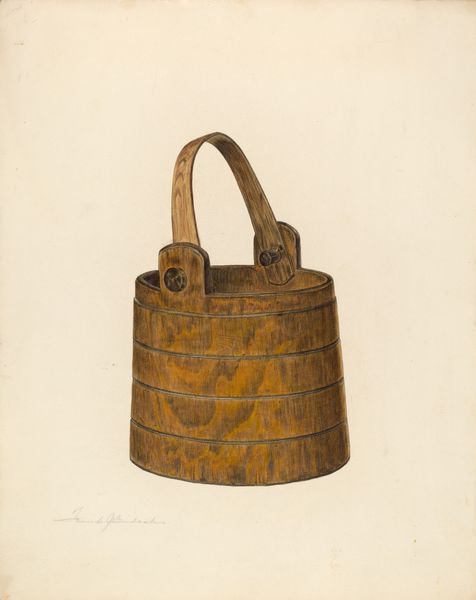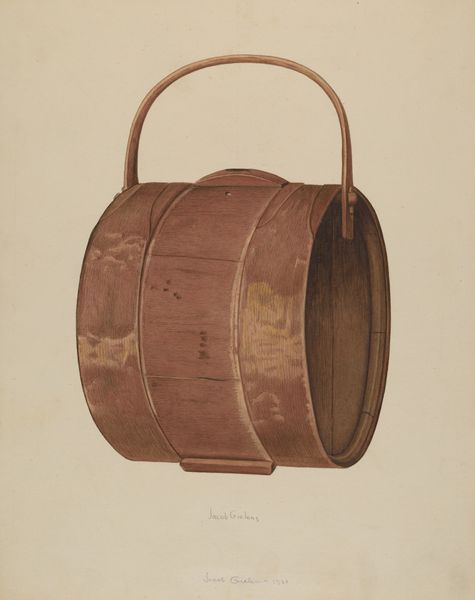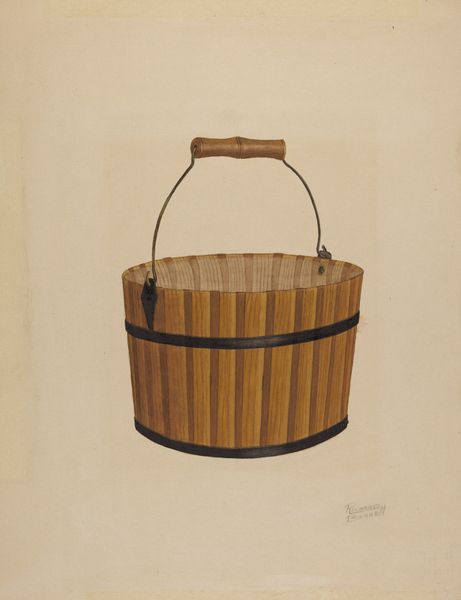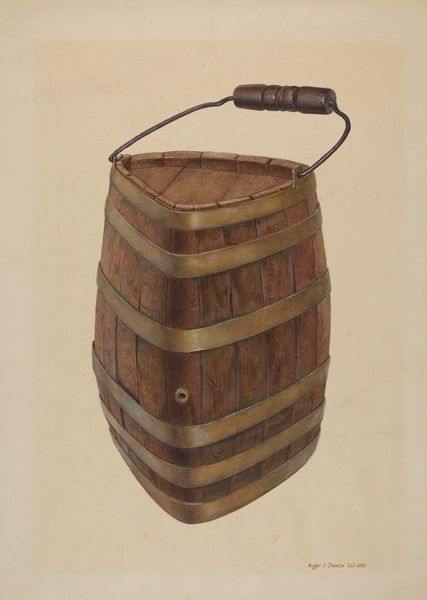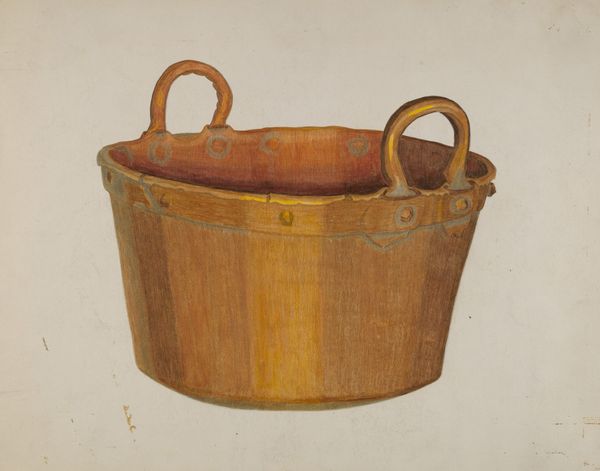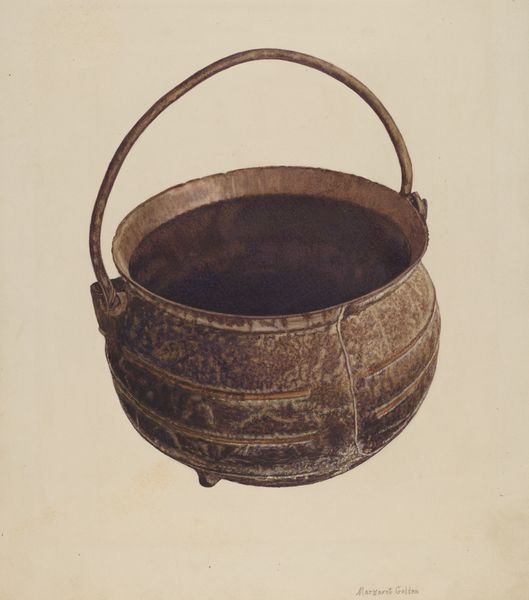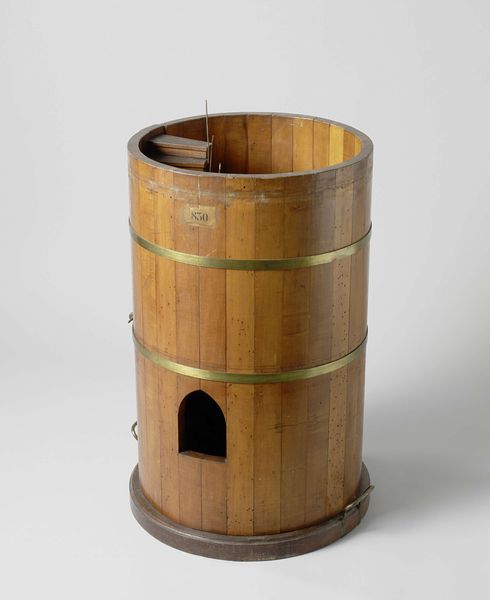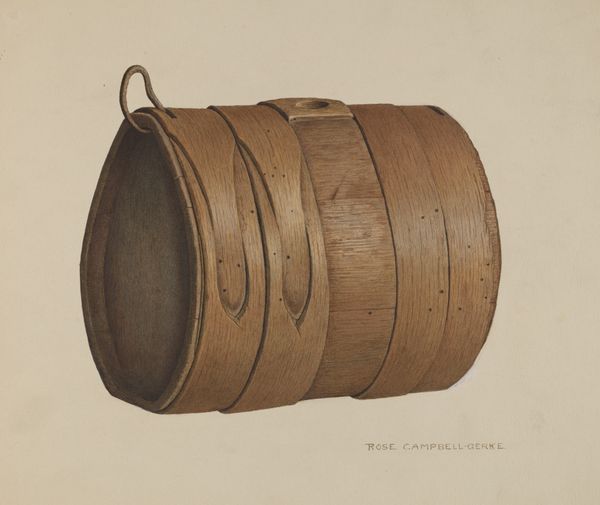
drawing, ceramic, watercolor
#
drawing
#
sculpture
#
ceramic
#
watercolor
#
ceramic
#
watercolor
Dimensions: overall: 46.7 x 36.7 cm (18 3/8 x 14 7/16 in.)
Copyright: National Gallery of Art: CC0 1.0
Curator: Welcome. We are standing before "Bucket", a watercolor and drawing created by Edward Bashaw, around 1940. What strikes you first about this piece? Editor: There is something deeply humble about it, isn't there? An ordinary object rendered with extraordinary care, almost veneration. I think of the lives connected to it, daily routines and forgotten labor. Curator: Exactly! The artist seems fascinated by process and by the materiality of this… bucket. Notice how he meticulously depicts the wear and tear, the aging of the wood and rusting metal. This isn’t about high art; it’s a study of a functional object, its history inscribed on its very surface. Editor: Yes, that rusting metal speaks volumes! For me it is calling on stories from simpler times: water drawn from the well, chores completed before sunrise. The circular form echoes cycles—life cycles, seasonal changes, the rhythm of rural life. It reminds me of images of the Well of Wisdom, perhaps even Baptism rituals. Curator: The rust details fascinate me. Its origin would have begun as pure metal shaped through human labour into what secures the bucket. I find myself drawn to the contrast between those original intentions and the subsequent chemical reactions of daily use. Editor: The handle extending upwards feels optimistic. It reminds me that humans can always ask and receive. As simple as this object is, it contains hope and plenty. But consider also its emptiness, it waits to be filled with something valuable. Curator: And think about its purpose: containment, transportation, utility. Water for cleansing, fire for warmth. A basic human need made manifest through this object, the labour required, the consumption implied. Editor: It feels significant that it's a common item. Most of us could understand the image and appreciate it's accessibility. We understand water, thirst, work, but he turns it into something with layers and power. Curator: In that layering and its impact on form is what truly captures the art object, elevated above what some may simply discard as banal. Editor: And yet it prompts an almost spiritual resonance within me. Curator: Yes. It’s both grounding and evocative. A remarkable combination.
Comments
No comments
Be the first to comment and join the conversation on the ultimate creative platform.
